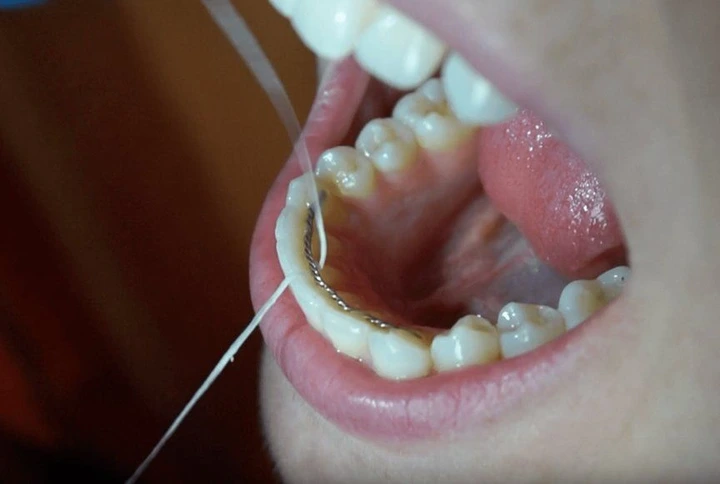Flossing Tricks for Permanent Retainers


A permanent retainer is a small wire that’s cemented to the tongue-side (lingual surface) of your bottom front teeth. Some people even have lingual retainers on their top front teeth.
Chances are, your orthodontist or hygienist has told you to use a floss threader to clean your fixed retainer. These thin, disposable little aids can be picked up at the grocery store next to the floss picks, or if you’re lucky, your dentist will send you home with some after every checkup. (Yes, it’s ok to re-use them a few times as long as you’re rinsing them off between uses!)
What Are Floss Threaders?
Since a toothbrush can’t reach underneath the wire and you can’t physically slide the floss down between your teeth, you need to know how to use floss threaders.
Threaders — like GUM brand’s floss threader or Bridge Aid — look a lot like a big plastic needle. All you do is tie your flossing string onto it so that you can weave it underneath your permanent retainer.
Flossing with permanent retainers can be easy once you know how to use floss threaders. It may just take a little practice and some good dexterity. If you can’t physically do it, don’t beat yourself up. But it will take some getting used to before you find it an easy habit to add to your daily routine.

Pick The Technique That Is Right For You
There are basically two different options when it comes to how to use floss threaders.
With either one, you ultimately want to be able to hug the floss against each tooth to rub it up and down several times, move to the next tooth, and so on.
You can also use the floss to rub the under-side of your permanent retainer so that you don’t get a lot of tartar buildup. (Side note: Be sure to check out my post on how plaque builds up on teeth and why some areas get more than others.)
1. Behind The Teeth Technique
The first and preferred option is to go behind your teeth and weave the floss threader up underneath the wire. Then you can grab the floss from the top and pull it through.
Once you get it under your lingual wire, you’ll need to grab either end and wrap it around your fingers. Then, slide it from one side to the other as you go down and hug each side of your individual teeth.
It’s super important to floss this area of your mouth, even if it is tempting to skip over it. If you’re not getting floss under your permanent retainer, nothing is cleaning down there!
2. Slide Technique
The second option for flossing with permanent retainers is to slide your floss threader in from the front of your teeth so that it reaches through and underneath your permanent retainer.
If you use this method, please be super careful not to hurt your gums! Jabbing a tough floss threader through could make your gums creep back, then leave a big visible space (aka “black triangle”) between your teeth.
Tools To Floss With A Permanent Retainer
Hopefully, you’re one of those people who only have cement on either end of your retainer, instead of having it bonded to every tooth. If you don’t, you’ll be weaving that floss between every contact area.
Great tools for interdental cleaning with retainers are:
If you get desperate, you have two other alternatives worth considering: water flossers and super floss.
Water flossers use a heavy stream of water to blast plaque out from between teeth. You can adjust the pressure and temperature, making it as comfortable as possible. Just be warned, water flossing can get a little messy at times.
Super floss, on the other hand, is a tufted strand of floss with a hard, pointed end that’s easy to stick under bridges or things like fixed retainers. It works great unless the tufted part is too thick to fit through your teeth.
Flossing With A Permanent Retainer
Once you get your braces off, it’s essential to know how to use floss threaders.
Slide the threader under your retainer, then grab the floss to hug up and down each tooth individually.
Be sure to talk to your dentist or hygienist if you’re having trouble with flossing permanent retainers. They can show you if you need to try another method, or if it has more to do with the way your appliance is attached to your teeth.

Make your inbox smile!
Subscribe





